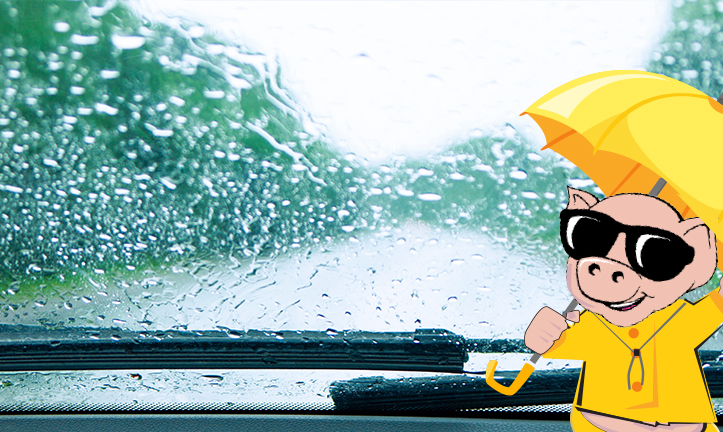
Rain or shine, drivers need to get where they’re going. Unfortunately, slick roads make it a little more complicated as rain sends commute times, road rage, and crash rates skyrocketing. In fact, nearly 1.2 million auto accidents reported each year are weather-related. This means drivers need to be informed and hit the road with confidence, even in the heaviest rain. So next time you’re out on the wet pavement, keep these five tips in mind.
1. Enhance Your Visibility
While it may seem obvious, rain can badly limit visibility, so drivers should give themselves the best view of the road possible. Safe visibility starts with your windshield wipers, so be sure to test them before heading out in the rain. The blades should be able to clear your windshield glass in one swipe, with little to no streaks. If your wipers do not wick away the rain quickly, it may be time to purchase and install a new set. By using your car’s windshield wipers, along with your headlights, you are also making it easier for other drivers to spot you. The more visible you are to others, the safer you’ll be on the road.
Note: Water-repellent windshield treatments may benefit those frequently driving in wet conditions.
2. Check Your Tires
Your tires are one of the most significant factors in staying safe on wet roads. While no tire is immune to hydroplaning, it’s important your tires are as optimal for intense weather conditions as they can be. If your tires are old, worn down, or deflated, your
car is more likely to hydroplane or slip on the wet pavement. Check your tires’ pressure, depth, and tread pattern before you go out in harsh conditions.
3. Slow It Down
Give yourself a few extra minutes to get from Point A to Point B when driving in rainy weather. Slowing down when roads are wet can make a huge difference in your safety. Rushed acceleration, snappy turns, and sudden braking can increase the risk of an accident, so slow down to ensure you have maximum control of your vehicle.
4. Brake Early
In rainy weather, drivers should leave extra room between themselves and the car in front of them. While brake technology has come a long way, you can never be too safe on slick roads. Drivers should take their feet off the gas earlier than they typically would in dry conditions and press on the brakes earlier as well.
5. Don’t Use Cruise Control
Drivers should not use cruise control in rainy weather. While cruise control is excellent for dry conditions, losing control of your car can happen much faster when this feature is enabled in the rain. Usually, in wet conditions, lifting your foot off the gas pedal puts weight on the front of your car, slowing you down enough to regain traction after losing it. However, your vehicle will not respond when cruise control is
on until you step on the brake. Therefore, drivers should remain entirely in control of their cars to avoid weather-related incidents.
6. If You Can’t See the Lines, the Water Is Too Deep
Steer clear of standing water, especially if the water is deep enough to camouflage the lines on the road. It does not take much water for drivers to lose control of their cars. In fact, three inches of water is more than enough to cause hydroplaning to occur. So, when possible, drive in areas with less water culmination, such as middle lanes.
If your car hydroplanes, take your foot off the gas and steer calmly in the direction you want your car to go. It’s important to stay calm and avoid panicking. Slamming on the break and making sudden movements will only prolong the time it takes for your car to regain traction.
To prepare your Toyota for the rainy season, visit us at Headquarter Toyota in Hialeah, FL.






